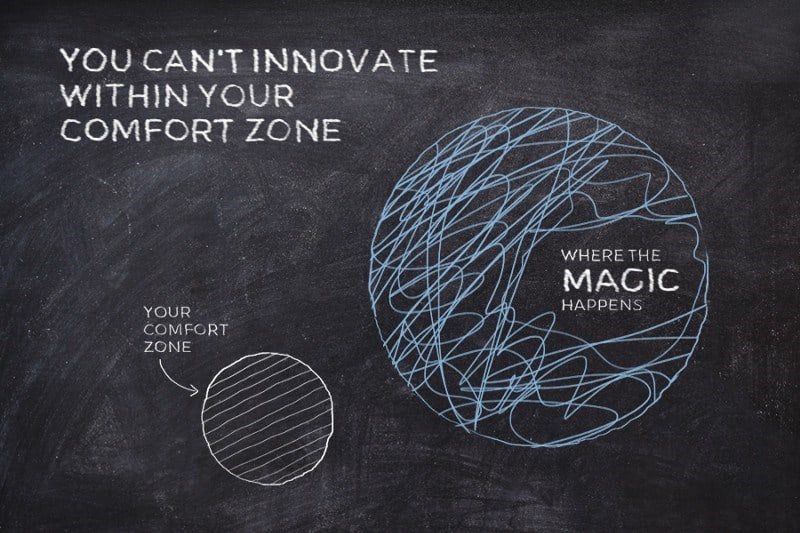If you’ve been around for a while, you know how passionate I am about effective communication. It’s like the magical glue that holds relationships, teams, and indeed, the world together! And yet, it’s astonishing how often we struggle with it. Be it in our personal conversations, work meetings, or casual social interactions, we’ve all faced moments where we wished we could communicate more clearly, effectively, or empathetically.
In today’s short post, I’m going to share with you some key insights that have revolutionized the way I communicate. They’re not complex theories from a textbook; rather, they’re simple, practical, and most importantly, actionable strategies that have helped me get my points across and bring clarity to my communication. I’ve heard about them over the past 10+ years from different people in various forms, and most recently I’ve watched a short interview with Alan Alda where he talked about these ideas, too.
So, whether you’re an eloquent speaker looking to refine your skills, a shy introvert hoping to be heard, or simply someone seeking to strengthen relationships and make an impact, this post has something for you. Let’s dive in, shall we?
1 – Don’t try to pass on more than 3 pieces of crucial information
Don’t try to make more than 3 important points. If it’s only one, even better!
This principle revolves around the idea of cognitive load. In other words, people can only handle and retain a limited amount of information at a given time. This principle is especially crucial in communication, where the aim is not just to transmit information but also to ensure the recipient understands, retains, and possibly acts upon that information.
It’s a guideline grounded in the notion that people are more likely to remember information if it’s delivered in smaller, more manageable chunks. Here are some reasons why:
- Attention and Retention: Cognitive science suggests that our working memory (the part of our memory where information is actively processed) can hold a limited amount of information at any one time. A widely accepted rule, often attributed to cognitive psychologist George Miller, suggests that the average number of objects an individual can hold in their working memory is about seven. However, this can often reduce to around three to five when dealing with complex information. Hence, sticking to three main points or less can increase the chances that your audience will retain and recall what you’re saying.
- Focus: By limiting the number of main points or key pieces of information you’re passing on, you’re allowing your audience to focus more effectively. This could lead to a deeper understanding and more thoughtful processing of each point.
- Clarity and Conciseness: When communication is clear and to the point, it’s easier for the audience to follow along. By condensing your message to three main points, you’re reducing the possibility of information overload and improving the likelihood of your message being understood.
- Decision-Making: Too much information can lead to analysis paralysis, where individuals become overwhelmed by the number of options and have difficulty making decisions. By limiting the amount of information you provide, you can help your audience make more efficient and confident decisions.
- Prioritization: Not all information is equally important. By selecting the top three points to share, you are automatically prioritizing the most crucial information. This helps your audience understand what they should focus on and remember.
2 – When explaining a non-trivial concept, idea, describing a problem, try to shed light on it from 3 different angles.
Try 3 different ways of explaining it. Think about 3 different personas in the audience. Consider 3 different skill levels.
This principle is an effective strategy to ensure comprehensive understanding of a concept, idea, or problem, especially when it is non-trivial or complex in nature. Here’s an explanation as to why:
- Enhanced Understanding: Exploring a concept from multiple perspectives allows for a more rounded, thorough understanding. Each angle can reveal different aspects of the topic, thereby giving the recipient a broader and more nuanced grasp of the concept.
- Appealing to Different Learning Styles: People have different learning styles. Some people may understand a concept better when it’s presented in a visual manner, while others may prefer a logical or verbal explanation. By approaching a concept from three different angles, you increase the likelihood of connecting with diverse learning styles in your audience.
- Redundancy and Reinforcement: If the idea or concept is difficult or abstract, explaining it in different ways can provide a form of redundancy that reinforces understanding. If the recipient doesn’t understand one explanation, they may grasp it when it’s presented from a different angle.
- Anticipating and Addressing Misunderstandings: When you present an idea from multiple angles, you can anticipate and preemptively address potential misunderstandings or objections. Each new perspective provides an opportunity to clarify and elaborate on the concept.
- Building a More Complete Picture: Especially with complex concepts, it’s important to show how the concept operates in different contexts or how it relates to other ideas. By using different angles, you provide a more complete and integrated picture of the idea.
For example, if you’re explaining the concept of climate change, you might approach it from three angles:
- Scientific: Discuss the science behind climate change, including greenhouse gases, the greenhouse effect, and how human activities contribute to these processes.
- Environmental: Discuss the impacts of climate change on the environment, such as changes in weather patterns, rising sea levels, and loss of biodiversity.
- Societal: Discuss how climate change affects societies around the world, including impacts on agriculture, the economy, and migration patterns.
Each angle complements the others, and together they give a comprehensive view of the subject. This strategy also ensures that your explanation is more resilient against misunderstandings or gaps in knowledge.
3 – Repeat the important points 3 times during your conversation.
The first time gives an impression and an idea, the second one makes the audience familiar with the idea, the third time they will be “oh yes, I get it now”.
This guideline is a popular one in communication theory, often encapsulated in the phrase “tell them what you’re going to tell them, tell them, then tell them what you told them”. This principle is based on several key insights from cognitive psychology and communication science:
- Primacy and Recency Effect: People are most likely to remember the first and last things they hear (known as the primacy and recency effects, respectively). By repeating your main points at the beginning, middle, and end of your conversation, you are capitalizing on these effects to enhance recall of your key messages.
- Reinforcement: Repetition strengthens memory traces and enhances recall. Each time information is repeated, it’s encoded more deeply in memory, making it easier for your audience to remember it.
- Clarification and Emphasis: Repeating key points can also clarify your message and signal to your audience that these points are important. It provides opportunities to rephrase or add details, helping your audience to understand the points better.
- Catering to Different Attention Spans: Not everyone in your audience may be attentive at all times. Repeating your key points ensures that even those who may have momentarily zoned out or misunderstood initially have more opportunities to catch and understand the key points.
In summary, the cornerstone of effective communication lies in the ‘Rule of 3’. First, streamline your information to three crucial points, thereby preventing information overload and facilitating better understanding and decision-making. Second, when dealing with complex topics, adopt three different angles of explanation to accommodate diverse learning styles and ensure a more thorough understanding. Finally, reiterate your key points thrice during your conversation to capitalize on cognitive biases and reinforce the memory of your message.
These are not convoluted theories but simple, practical strategies that have the power to elevate your communication, making it clearer, more impactful, and more memorable.




